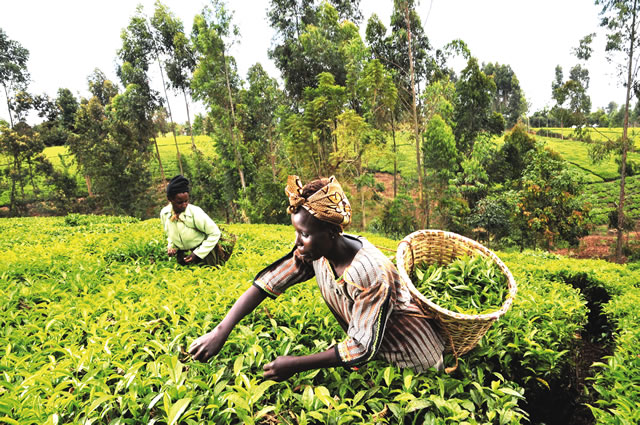NIGERIA spends upwards of $10 billion annually to import essential food commodities despite having vast arable land, an abundant labour force, and significant agricultural potential, says the Minister of Agriculture and Food Security, Abubakar Kyari. This fresh admission reflects decades of neglect and mismanagement, which have trapped the country in import dependency and food poverty.
This glaring contradiction undermines the country’s economic sovereignty and threatens the welfare and future of its population.
Rather than bemoaning this predicament, the government should implement strategic and collaborative actions to reposition the agricultural sector as the basis for economic diversification, food security, social stability and prosperity.
As food prices soar and millions face hunger and poverty, amid population numbers expected to rise by 70.9 per cent to 401.3 million by 2050, the imperative to lift Nigeria’s agricultural sector, especially in critical areas like grains, beef, dairy and fisheries, becomes increasingly urgent.
Nigeria’s food import bill, largely directed to essentials such as wheat, rice, sugar, fish, and tomato paste, dwarfs the country’s earnings from agricultural exports, which currently stand at around $400 million, or under 0.5 per cent of global volumes.
Yet, the country sits on 85 million hectares of agricultural land, of which 35 million hectares is unfarmed and boasts a youthful population with over 70 per cent under 30 years, providing a vast labour pool.
Agriculture contributes 26 per cent to the GDP and employs approximately 70 per cent of the workforce, predominantly comprising smallholder farmers who account for about 90 per cent of agricultural production.
This paradox is epitomised by the country’s wheat consumption, estimated at 6.5 million tonnes annually, over 13 times its domestic output.
Food inflation has spiked alarmingly, standing at 22.7 per cent as of July, with staples such as rice (+129 per cent), beans (+217 per cent), and yams (+428 per cent) witnessing unprecedented price hikes.
The agricultural sector underperformance has resulted in Nigerian households now spending about 59 per cent of their income on food, the highest globally. This causes widespread food insecurity and deepens poverty, with over 106 million Nigerians living in extreme poverty.
Nigeria’s agricultural sector has been hampered by inadequate and unsuitable financing models, low technology adoption and infrastructure gaps.
The 2025 federal budgetary allocation to agriculture stood at a meagre 1.5 per cent (N826.5 billion or $533 million), just like in previous years, proving that investment and state support remain insufficient.
Traditional credit systems often suffocate farmers due to high-interest rates and stringent loan conditions, discouraging expansive farm activities and mechanisation.
Innovative financing models such as revenue-sharing, pay-as-you-harvest, forward contracts, and equity financing must be vigorously promoted to align with farming realities and incentivise production.
Tractor density in Nigeria stands at a dismal 0.27 horsepower per hectare, far below the FAO’s recommendation of 1.5 hp/ha. About 90 per cent of farmers still rely on rudimentary hand tools, which restricts cultivation scale and output.
Inadequate supply of quality seedlings, fertilisers, and irrigation infrastructure, coupled with insufficient extension services, further depresses yields. Post-harvest losses due to poor storage and logistical bottlenecks have become endemic.
Environmental degradation, desertification in northern states, and erratic rainfall patterns also compound the challenges undermining agricultural productivity.
More critically, widespread insecurity, manifested in herders’ attacks on farmers, banditry, and terrorism, has seized farming communities, displacing farmers and threatening food production sustainability.
Nigeria’s agricultural value chain suffers severe fragmentation. Processing and manufacturing sectors remain underdeveloped due to erratic power supply, funding shortfalls, and weak market linkages.
The cocoa sector loses over $2 billion annually due to the underutilisation of local processing capacity, which operates at merely 30 per cent. Poor rural road infrastructure and extortion by state agents inflate costs and reduce farmers’ profitability.
Addressing Nigeria’s food security necessitates holistic attention to sectors like dairy and fisheries, which have vast untapped potential.
Nigeria hosts the fourth-largest cattle population in Africa, estimated at 20 million cattle, including over 2.35 million dairy cows.
The US Department of Commerce values Nigeria’s dairy market potential at $6.5 billion. Yet, dairy production remains largely traditional and low-yielding.
Modern ranching practices are needed to improve both quantity and quality of milk and beef products, mitigating the persistent herder violence against farmers that cripple livestock farming.
The Bola Tinubu administration’s collaboration with Brazilian entities to transform the dairy sector is a welcome step forward.
With over 853 kilometres of coastline and 18 million hectares of inland waterways, Nigeria should be a powerhouse in fisheries. However, fish consumption remains a luxury for many Nigerians, and domestic production pales against imports.
Nigeria’s annual fish demand is 3.6 million metric tonnes, but local production meets only about 1.2 MMT, leaving a 2.4 MMT gap filled by imports at an annual cost of $1.2 billion.
Yet, foreign-owned trawlers exploit Nigeria’s waters, exporting fish back to Nigeria as imports, an economic and resource tragedy.
The Marine and Blue Economy Ministry should strengthen local fishing enterprises through access to finance, modern equipment, and value addition, which are all critical to transforming this sector into a sustainable food source and income generator.
It is quite telling that countries with limited natural endowments have demonstrated that strategic investment, innovation, and organisation can transform agriculture from subsistence to surplus, reaping vast export revenues.
The Netherlands, with just 500,000 hectares of arable land, generates $70 billion annually in agricultural exports through mechanisation, smart research, and efficient logistics.
Israel, a desert nation with 380,000 hectares under cultivation, allocates 30 per cent of its budget to agriculture and water management. That country applies a market-oriented, farmer-centric, and innovative approach, producing significant outputs of citrus, groundnuts, and tomatoes despite harsh conditions.
Nigeria’s government and private sector must study and adapt such models, focusing on research commercialisation, farmer cooperatives, and an innovation-driven ecosystem that supports the entire agricultural value chain.
The agricultural sector’s problems, while deep-rooted, are not insurmountable.
The Federal Government’s recent initiatives, such as the procurement of 2,000 tractors, vitamin A fortification of crops, and the Agriculture Promotion Policy, represent initial steps that need exponential scaling.
However, certain key strategic imperatives are required to succeed.
The government must take the lead in resource allocation and devote at least 10 per cent of the budget to the sector as recommended by the African Union’s Malabo Declaration.
Innovative financing that aligns investors with farmers, mitigates risks, and rewards performance is also necessary. Public-private partnerships can mobilise capital and expertise to drive modernisation.
Mechanisation must be widely adopted. Extension services should provide training on modern farming, animal husbandry, and climate-smart techniques. Fertiliser subsidy and distribution must be transparent and efficient to reduce the fertiliser mafia’s stranglehold.
Investments in processing, storage, and logistics infrastructure are critical to reducing post-harvest losses and adding value locally. Upgrading rural roads will enhance market access and reduce production costs.
The government must decisively combat banditry, terrorism, and resource-based conflicts that terrorise farming communities. Ensuring farmer safety will encourage return to farmlands and attract agribusiness investments.
Concentrating on staples such as rice, wheat, cassava, oil palm, cotton, as well as key growth sectors like dairy and fisheries, will deliver food security, reduce imports, and generate foreign exchange.
With over 70 per cent of the population under 30, youth engagement through training, access to credit, and empowerment programmes is critical to inject dynamism into the sector and stem rural-urban drift.
If the Tinubu government is to achieve one of the stated core objectives, it must lead the way in galvanising resources, embracing innovations, and ensuring security and sustainability for Nigeria to unleash its agricultural potential.







